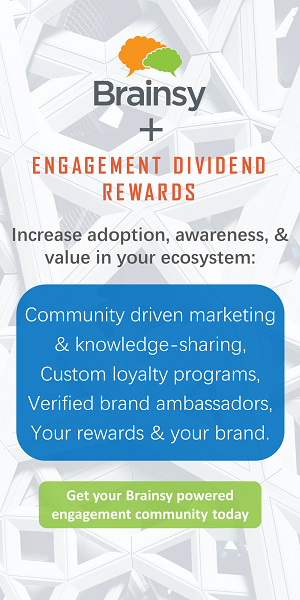In this day of instant information, anyone you meet can access the internet and find out more about you. But do you know what they’re seeing? More importantly, do you know WHO they’re seeing? Formerly “branding” was something that was left to the marketing departments of large companies. However, with the growing possibilities to create an online presence via the internet, branding has become a personal thing as well. Crafting your online brand has become increasingly important for professionals in all fields.
1. Figure out what brand you want to project
The first step to creating your brand online is to figure out what you want it to be. Depending on your preferences, industry, and future goals, figure out what kind of online presence you’d like to project. What types of things do you want people to associate with your name or what general qualities do you want linked to your brand? Understanding your own specific goals in online branding will help to to build a clear strategy and execution plan.
2. Audit your existing online presence
Now that you’ve figured out what you want, look at what you have already. Type your name into Google or other search engines and see what type of things show up. Find something unflattering to your desired image? See if you can take it down; if you can’t, its strength will fade as your intentional branding efforts make progress. If you have a relatively common name, try differentiating yourself from the herd by using the middle initial of your middle name from now on. New things pop up every day on the internet, so set a Google alert for your own name to monitor how your brand is coming along.
2. Choose networks that can support your brand image
Now you know where you are and where you aim to be. The last planning component is figuring out which vehicle is the best to carry forth your brand. Options include: LinkedIn, Twitter, Facebook, Instagram, an Expert Calling Network (ECN), or a personal website. The methods you pick depend on the brand that you decided on in the first step.
LinkedIn is the premier social media site for professionals. Most professionals will have a LinkedIn to connect with business contacts. Check out my previous article http://ecn.expertcallingnetwork.com/kb/article/4-steps-to-establishing-your-personal-brand-online-through-linkedin-for-beginners- if you want to set up a great profile.
Twitter is the micro-blogging site that has taken over the world. It’s easy to stray from your brand, so be conscious about those you follow and the tweets you make. If using your Twitter as part of your online brand, keep to your image!
Facebook is generally the personal social media website. Facebook is where you post pictures of your family or reconnect with high school classmates, but not where you try to project a professional persona. To prevent your more social online presence from interfering with your established online brand, increase your Facebook’s privacy settings or go by a nickname on Facebook.
Instagram is a picture-sharing app/website. With this, it’s more appropriate for those projecting a creative online presence. However, it can also be used for other industries as well. Share exciting projects you’re working on or places you’re traveling to through work. If you decide to use Instagram in a more personal fashion, don’t associate it with your crafted brand through a full name.
Creating an Expert Calling Network (ECN) profile is also a great way to showcase your professional brand alongside other professionals in your area of expertise (... everyone is an expert in something!) Through an ECN, individuals can speak with you about the area of your expertise (and you get paid for doing so). On the ECN, you have numerous features at your fingertips to further develop your online brand.
Traditionally used for creative types or university professors, a personal website is a common way to project your online brand image. The best part of creating a personal website is that it is totally customizable. It can be as simple as a resume and links to your other online presences, or you can showcase some of your work through the site. There are also now more options than ever to create a free customized website, however, a personal website may come with more programming responsibility and may require you to do more promotion to make sure that it gets discovered.
4. Associate with other strong brands
When getting started on building your online presence, leverage other strong brands in order to elevate your own. Start with the three C’s: company, college, colleagues. Join groups/like pages of the companies for which you work(ed) and the school you attended, and also connect with colleagues online. The strength of these established brands can help establish yours as well.
5. Produce value in every outlet
The last step in creating a strong online brand is to produce value through content. Add value by creating content that is in line with your brand. Be deliberate in what you share. Each tweet, every picture, and each post contributes to the personal brand you you are projecting. Keep your followers engaged by posting often as well. Each outlet has their accepted rules about how often you should post. Figure out what is appropriate by examining similar pages to your own. By posting well and posting often, you can cultivate an online presence for years to come.
***
Steven Burda (http://www.sburda.com and
www.Linkedin.com/in/burda) is one of the most connected people in the world with 125,000 direct first level connections on LinkedIn as of March 2016. He writes for the ECN Knowledge Board (blog) covering topics such as social media marketing, LinkedIn Growth Strategies, Expert Calling Network (ECN) User Tips, personal branding, and the use of social media for purposeful networking and building quality relationships.
Register for FREE to comment or continue reading this article. Already registered? Login here.
1

